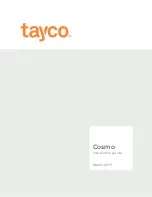
RTC
®
5 PC Interface Board
Rev. 1.9 e
6 Developing User Applications
80
innovators for industry
6.5.2 Character Sets and Text Strings
For marking tasks, it is convenient to use the RTC
®
5’s
list memory for storing command lists as separate
subroutines that define how the scan system should
mark the needed characters and text strings.
To simplify management of characters and text
strings, the RTC
®
5 provides the possibility of storing
indexed character definitions and text string defini-
tions in its protected buffer area (“List 3”) and calling
them via simple commands.
Indexed character definitions and text string defini-
tions are essentially indexed subroutines, but
definable and callable via their own commands, and
managed by a dedicated internal RTC
®
5
management table – separately from indexed
subroutines.
The individual character and text string definitions
must specify the shape and orientation (e.g. parallel
to the X or Y axis) of the characters or text strings.
Both relative and absolute vector commands can be
used for this. The character’s or text string’s end
position should be chosen to serve as the start
position of a subsequent character. Each character
definition or text string definition must be terminated
with
.
Defining Indexed Character Sets
A sequence of character-defining list commands can
be directly stored in the protected buffer area via the
command (the resultant automatically-
assigned memory address can be queried with
). Alternatively, a non-indexed
subroutine can be subsequently referenced with the
command and then copied via
/
as an indexed character in the
protected buffer area.
The RTC
®
5 manages up to 4 character sets, each with
256 indexed characters.
Other than that, the same rules as for indexed
subroutines are applicable (see
Conversion of Non-Indexed Subroutines", page 78
).
Notes
• \0 (NUL) is a markable character, too. \0 also
serves as a text-output delimiter (for text strings),
in which case it will not be marked.
• Indexed character set definitions cannot use
,
or
commands; otherwise, improper
marking might occur during processing of
indexed characters.
Calling Indexed Characters
The marking of an individual character is started by
calling the
command (or the “AbsCall”
command
) along with the index of
the corresponding indexed character.
Individual serial numbers can be marked via indexed
characters (numbers) by calling the
"Marking Dates, Times and Serial
).
The marking of entire text passages can be started via
the
command (or the “AbsCall” command
). The desired character set can be
selected in advance via the
command. When a
command is loaded,
the to-be-marked text (if more than 12 characters in
length) is split into blocks of 12 characters, with each
block receiving its own
command in the
list memory. Keep this in mind to prevent unintended
overflow of the corresponding buffer area.
Defining Indexed Text Strings for Times,
Dates and Serial Numbers
For the marking of times, dates and serial numbers,
it can be useful to define text strings such as months
(“January”… “December”, “Jan.” … “Dec.”, “/01/” …
“/12/” etc.) and days of the week (“Sunday” …
“Saturday” or “Sun.” … “Sat.” etc.).
Here, you can likewise use previously-defined char-
acter sets with the
commands.
, a sequence of list commands
defining a text string can be loaded directly into the
protected buffer area as an indexed text string (the
resultant automatically-assigned memory address
can be queried via
). Alterna-
tively, a non-indexed subroutine can be subsequently
referenced with the
command and then copied via
as an indexed text string in the protected buffer area
The RTC
®
5 can manage up to 42 indexed text strings.
















































